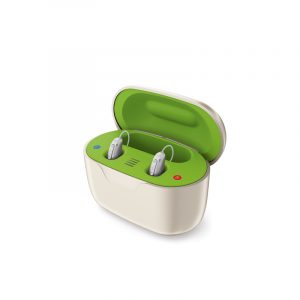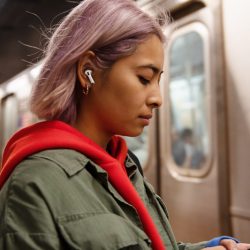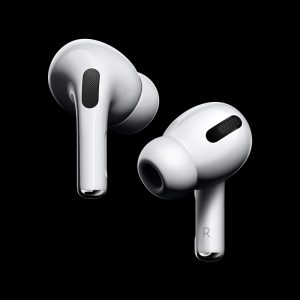Lots of people have at least some hearing loss — 37.5 million and growing in the U.S., according to the FDA — but few do anything about it because of factors like price, access, and the stigma of wearing hearing aids. That’s about to change, as the FDA finalizes the rules for over-the-counter hearing aids, with no exam or prescription required. Also, Bluetooth has taken a few giant leaps forward in the last year and half, making it the perfect tech to power tiny devices like hearing aids and integrate them into our increasingly wireless environment. Meanwhile, a related category of devices called personal sound amplification products (PSAPs) has brought many people back into the conversation, even though they’re not intended for people with actual hearing loss. So what’s the difference between hearing aids and PSAPs, and how will over-the-counter (OTC) hearing aids be different from traditional ones? Are they all so-called hearables? Understanding these technologies and their applications will help you hear through the noise and provide the best options for your customers.


The Three Techs Changing the Hearables Landscape
Bluetooth LE Audio
Introduced in January 2020, Bluetooth LE Audio provides great sound quality with extreme power efficiency for small devices like hearing aids. That means the clunky behind-the-ear packs typical of traditional hearing aids will soon be a thing of the past, since devices will be able to cram plenty of juice into ever-smaller spaces. It also lets headsets stream audio directly from compatible electronics like TVs, enables new features like connecting to multiple audio sources simultaneously, and lets you listen in to live broadcasts streaming to multiple headsets.
Artificial Intelligence
Suppressing background noise without impacting the volume of someone nearby speaking to you is an indispensable feature for modern hearing-assistance devices. Artificial intelligence, however, makes noise reduction (filtering noise) and cancellation (generating soundwaves that cancel out noise) much more effective, allowing the device to fine-tune its performance based on your environment.
Head Tracking
Accelerometers and gyroscopes, like those in Apple’s AirPods Pro and Max, track your head movements so they can adjust sounds based on the physical position of your ears. While this is a fun feature for watching movies or concerts, it’s a game-changer for accurate pinpointing of audio sources you want in focus in a noisy area.


Three Types of Hearables
Traditional Hearing Aids
Intended for users with a wide range of hearing loss, traditional hearing aids are tightly regulated as medical devices and are dispensed by health professionals with an exam and personal fitting. Most models consist of a battery/electronics module that sits behind the ear and a small tube terminating in an earbud that goes into the ear canal, though there are all-in-one types in which the whole kit sits entirely in your outer ear. The newest generation of hearing aids incorporates in-canal designs and Bluetooth connectivity.
OTC Hearing Aids
The FDA is close to finalizing a new class of OTC hearing aids intended only for users with mild to moderate hearing loss (not severe or profound loss). They don’t require an exam or personal fitting, making them somewhat controversial due to somewhat liberal loudness and fit restrictions that some audiologists believe could potentially lead to unintended additional hearing damage. However, many in the field, including New Orleans-based audiologist Dina Zeevi, feel that hearing aids “should be as common to see as a set of eyeglasses.” The FDA’s rigor in the approval process is crucial, she adds: “For mild to moderate hearing loss, the FDA must ensure that the devices are not over-amplifying loud sounds. But if it can force manufacturers to bring down prices and normalize hearing aids, I’m all for it.” Although OTC hearing aids are generally expected to be way more affordable than traditional hearing aids, high-end models like the Bose SoundControl Hearing Aids will still run you about $850.
Personal Sound Amplification Products (PSAPs)
This fast-growing category encompasses a wide range of products that make use of directional microphones and digital sound processing to capture audio from specific sources while filtering out background noise. One interesting twist on this theme is Noopl, an iPhone attachment that uses Apple’s AirPods Pro to track your head movements and separate out speech coming from wherever you’re looking from background noise.
The Three Types of Hearables Consumers
Hearing Impaired
Mild to moderate hearing loss is defined by the CDC as the ability to hear some to almost no speech when someone is talking at a normal level. The WHO estimates that 466 million people globally suffer some degree of hearing loss, projected to grow to 700 million by 2050. Most of these people will greatly benefit from the availability of OTC hearing aids, especially as Bluetooth continues to gain efficiency.
People Without Hearing Loss In Challenging Environments
You don’t have to be hard of hearing to need selective amplification of sounds in challenging noise/distance situations like having a conversation in a noisy restaurant, watching TV shows or movies with difficult-to-hear speech, or even birdwatching. This is where PSAPs come in, with directional mics to capture sounds from precise locations and make them stand out. Most come with software that lets you fine-tune the audio to suit your needs.
The Prevention-Minded
According to Rick Neitzel, associate professor of environmental health sciences at the University of Michigan School of Public Health: “Even during this pandemic, when many people are staying home, we’re still seeing 25 percent of our participants experiencing high environmental sound exposures.” Foam earplugs or safety earmuffs can only go so far toward providing consistent protection from loud sounds while maintaining contact with the world around you. Artificial intelligence turns noise cancellation into a dynamic system that responds differently to various types of sounds, filtering out potentially dangerous construction noise while preserving or amplifying speech sounds.
BONUS: Some smart hearables can perform other health-related functions like heart rate monitoring and fall detection.
Determining a customer’s hearing needs correctly in the hearables space is critical, and while you don’t have to be an audiologist to guide someone towards the right product category, it’s helpful to understand the signs of different levels of hearing loss such as those outlined by organizations such as the AARP; these include everything from the obvious (trouble following conversations) to the more subtle (not remembering things people tell you).
HEARABLES COMPANIES TO WATCH: Sennheiser (whose consumer audio business was recently bought by hearing aid maker Sonova), Noopl, Olive Union, Apple, and Bose. LEARN MORE
"hear" - Google News
April 20, 2022 at 12:31AM
https://ift.tt/N2bWitq
Hear, There, and Everywhere: Smart Hearables - Dealerscope
"hear" - Google News
https://ift.tt/Ek2nFuz
https://ift.tt/o3dTxWX
Bagikan Berita Ini















0 Response to "Hear, There, and Everywhere: Smart Hearables - Dealerscope"
Post a Comment